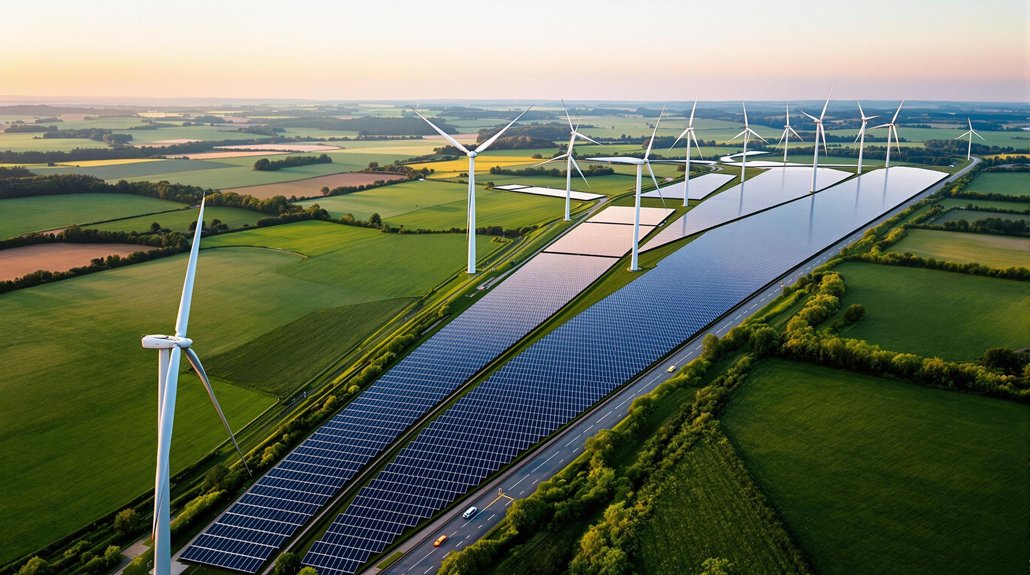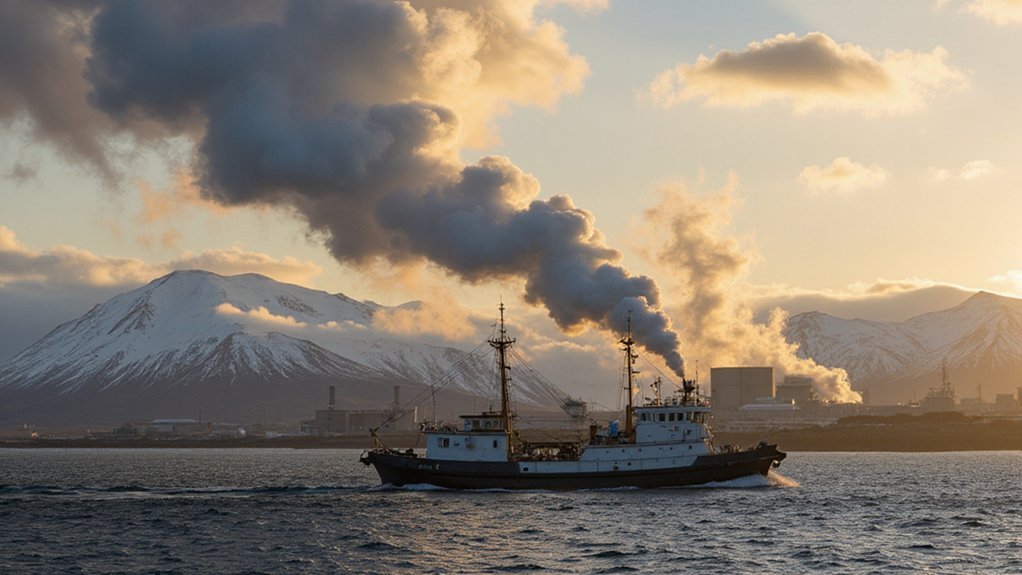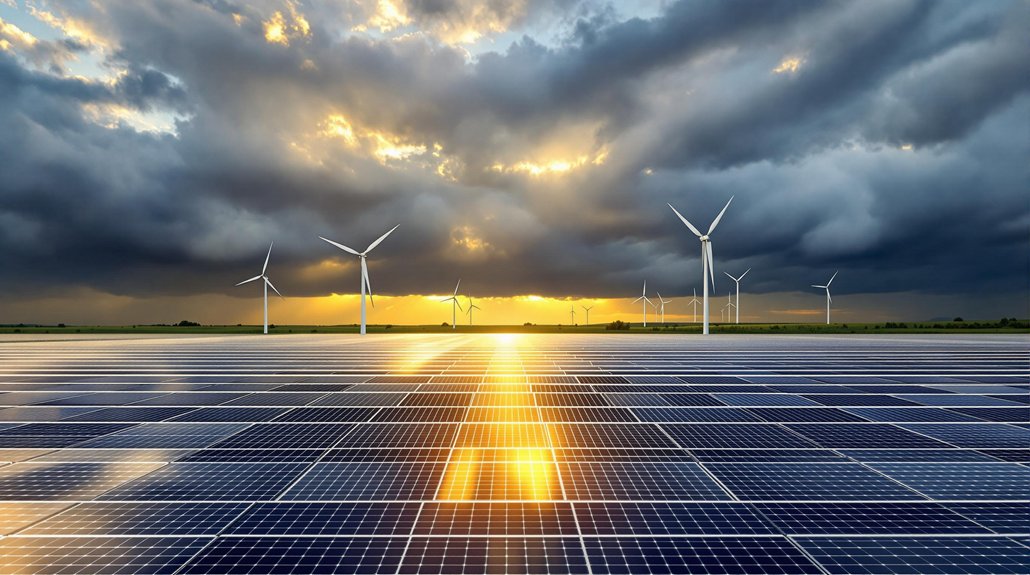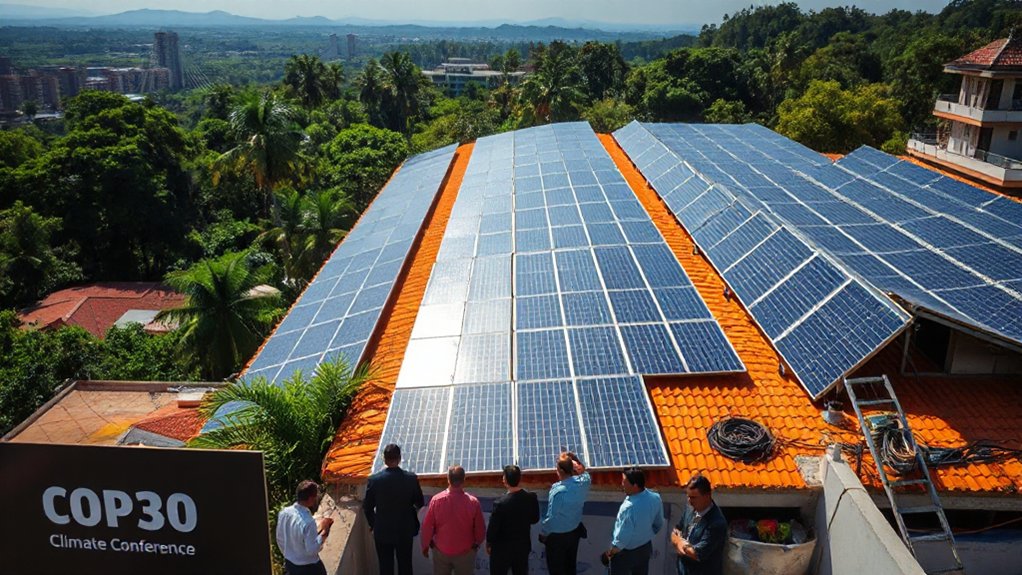Europe’s energy revolution continues to accelerate, with renewables now generating 47% of EU electricity. Solar recently surpassed coal, providing 11% of power, while wind contributes 17%. The EU targets 42.5% renewable energy by 2030, with ambitious goals of 320 GW new solar and 450 GW wind capacity. Fossil fuels dropped to just 29% of the energy mix in 2024. The transformation isn’t just environmental—it’s creating hundreds of thousands of jobs too.
Europe is transforming its energy landscape through ambitious projects like the massive Solar Highway project—a demonstration of the EU’s renewable energy targets. This monstrous installation generates 40 million kWh while hosting 26 wind turbines. Talk about multitasking.
The EU isn’t messing around with its goals: 42.5% renewable energy by 2030, with hopes of pushing to 45%. They’ve already beaten their 2020 target of 20%, hitting 22.1% instead. Not too shabby.
Buildings will need to reach 49% renewables by 2030, while transport faces a 29% target. Industry? They’re expected to increase renewables by 1.6% annually. Ambitious? Yes. Necessary? Absolutely.
Solar power is having its moment in the sun (pun intended). In 2024, it overtook coal for the first time, providing 11% of EU electricity. Nearly half of EU power now comes from renewable sources, reaching 47% in 2024, a significant increase from 34% in 2019. The EU’s dedicated Solar Energy Strategy aims to deploy over 320 GW of new solar PV by 2025. Experts predict 200 TWh of solar generation by 2025. The industry added a whopping 66 GW of new capacity in 2024. Modern solar panels operating at 17-20% efficiency are increasingly being deployed across Europe, with researchers working to push this limit significantly higher. Costs keep dropping too, making solar increasingly competitive with fossil fuels.
Solar’s epic rise continues as costs plummet and capacity soars, making fossil fuels look increasingly like yesterday’s news.
Wind isn’t far behind. It generated 17% of EU electricity in 2024, outperforming gas for the second consecutive year. The EU is targeting 450 GW of wind capacity by 2030, though some offshore projects are facing delays. They’ll need to add about 34 GW annually to hit their goals. No pressure.
Fossil fuels are finally on their way out. Coal dropped below 10% of EU electricity in 2024, while gas generation declined for the fifth consecutive year. Total fossil fuel contribution fell to 29% in 2024, down from 31% in 2023.
The economic impact is substantial. Wind projects alone saw €33 billion in investments in 2024, with potential to create over 500,000 jobs by 2030.
Europe’s energy revolution isn’t just happening—it’s accelerating. And that Solar Highway? It’s just the beginning.









